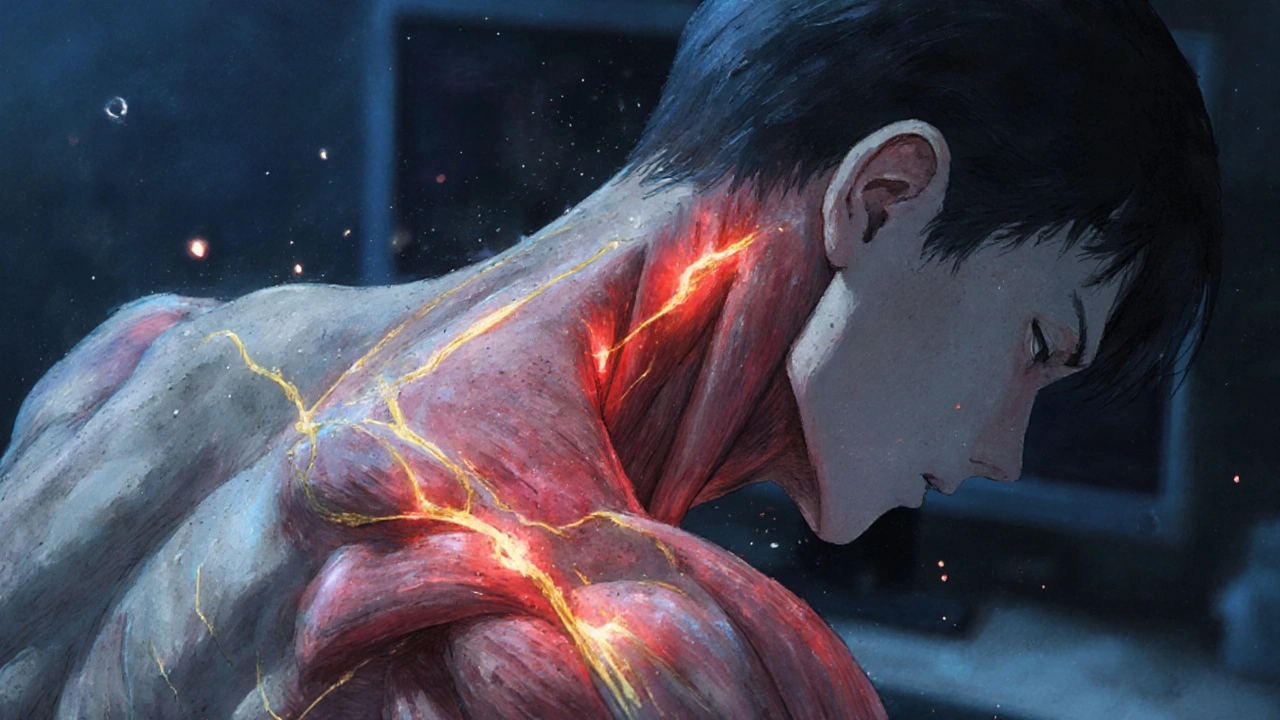Myofascial Pain Treatment: Effective Relief and What Actually Works
When you have deep, aching muscle pain that won’t go away—especially in your back, neck, or shoulders—it might not be a strain or arthritis. It could be myofascial pain, a condition where tight bands of muscle tissue, called trigger points, cause persistent pain and stiffness. Also known as myofascial pain syndrome, it’s one of the most common but misunderstood sources of chronic pain in men.
Trigger points don’t show up on X-rays or MRIs, which is why many people are told it’s "just stress" or "nothing serious." But they’re real. These knots form from overuse, injury, or even poor posture, and they refer pain to other areas—like a knot in your shoulder blade causing headaches or arm pain. Myofascial release, a hands-on technique that applies sustained pressure to release these tight bands, is one of the most effective ways to break them up. It’s not just massage—it’s targeted, persistent pressure that resets the muscle’s nervous system. And it works better than pills for many people.
Physical therapy is another cornerstone of myofascial pain treatment, a structured approach combining manual therapy, stretching, and movement retraining. Many men skip it because they think they need surgery or strong painkillers. But studies show that consistent physical therapy reduces pain more than opioids over time, without the risk of addiction. You don’t need fancy equipment—simple foam rollers, tennis balls, and daily stretches can make a huge difference if done right.
What doesn’t work? Random acupuncture sessions without a plan, over-the-counter pain patches that only numb the surface, or popping pills every day hoping it’ll disappear. Myofascial pain responds to consistent, hands-on care—not quick fixes. The best results come from combining manual therapy with movement—like correcting how you sit, lift, or sleep. Many men find relief by adjusting their workstation, sleeping on their back instead of their side, or doing 10 minutes of self-release every morning.
And it’s not just about pain. Untreated trigger points can lead to reduced mobility, poor sleep, and even mood changes because your body is stuck in constant stress mode. That’s why treating myofascial pain isn’t just about feeling better—it’s about getting your life back. The posts below cover real strategies: how to find your own trigger points, which tools actually help, what physical therapists do that you can do at home, and why some pain meds make it worse. No fluff. Just what works for men who’ve been through it.
Myofascial Pain Syndrome: Trigger Points and How to Release Them
Myofascial pain syndrome is caused by trigger points in muscles that refer pain elsewhere. Learn how to identify them, what causes them, and the most effective release techniques-from dry needling to self-massage-with real-world results.
© 2025. All rights reserved.

